Confused about the offside rule in football (soccer)? This guide breaks down this tricky rule in plain English with clear examples. CAUHOI2025.UK.COM explains all the offside scenarios and exceptions. Learn all the football rules today!
1. Understanding The Offside Rule in Football
The offside rule in football (soccer) is designed to prevent players from permanently lurking near the opponent’s goal, waiting for a long pass. It’s a complex rule, but crucial to understanding the game. In essence, a player is in an offside position if they are nearer to the opponent’s goal line than both the ball and the second-to-last opponent (usually a defender, but not always the goalkeeper) when the ball is passed to them. The offside rule is outlined in Law 11 of the Laws of the Game, maintained by the International Football Association Board (IFAB).
1.1 The Basic Principle
A player is in an offside position if:
- Any part of their head, body or feet is in the opponents’ half (excluding the halfway line).
- Any part of their head, body or feet is nearer to the opponents’ goal line than both the ball and the second-to-last opponent.
- The position of the hands/arms are not considered. For the purposes of determining offside, the upper boundary of the arm is defined as the bottom of the armpit.
- A player is only in an offside position. Being in an offside position is not an offense in itself.
1.2 Offside Offence
A player in an offside position at the moment the ball is played* or touched by a teammate, is only penalized if they become involved in active play by:
- Interfering with play by playing or touching a ball passed or touched by a teammate.
- Interfering with an opponent by preventing an opponent from playing or being able to play the ball by clearly obstructing the opponent’s line of vision or challenging an opponent for the ball or clearly attempting to play a ball which is close to them when this action impacts on an opponent or making an obvious action which clearly impacts on the ability of an opponent to play the ball.
- Gaining an advantage by playing the ball or interfering with an opponent when the ball has rebounded or been deflected off the goalpost, crossbar, or an opponent or been deliberately saved by any opponent.
1.3 No Offside
There is no offside offense if a player receives the ball directly from:
- A goal kick
- A throw-in
- A corner kick
1.4 The Role of the Assistant Referee
Assistant referees play a crucial role in identifying offside situations. They position themselves along the touchline to get the best view of play and raise their flag to signal when a player is in an offside position and becomes involved in active play.
2. Key Concepts & Scenarios
Understanding the offside rule requires examining several key concepts and common scenarios.
2.1 “When the Ball Is Played”
The exact moment a teammate plays or touches the ball is critical. If a player is onside when the ball is played, they can move into an offside position before receiving it without being penalized.
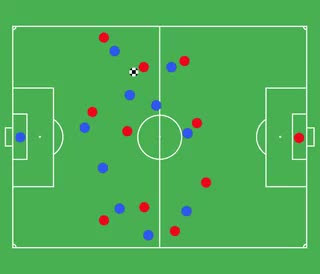 Timing Matters
Timing Matters
2.2 “Involved in Active Play”
A player in an offside position must also be “involved in active play” to be penalized. This means they are:
- Interfering with Play: Playing or touching the ball.
- Interfering with an Opponent: Obstructing an opponent’s vision or challenging them for the ball.
- Gaining an Advantage: Receiving the ball after it rebounds off a goalpost, crossbar, or opponent.
2.3 “Passive Offside”
A player in an offside position who is not involved in active play is considered “passively offside.” They are not penalized. This often occurs when a player is in an offside position but far enough away from the play that they don’t affect the opponent’s ability to play the ball.
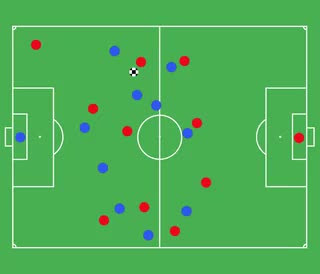 Acceptable Position
Acceptable Position
2.4 Even With the Defender
If an attacking player is level with the second-to-last defender when the ball is played, they are not offside. They must be past the defender to be in an offside position.
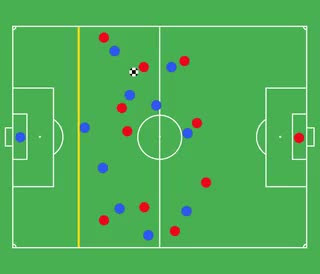 Close Call
Close Call
2.5 Offside Teammate
A player can be called offside even if they don’t touch the ball. If a player is in an offside position and obstructs the goalkeeper’s view or distracts a defender, they can be penalized.
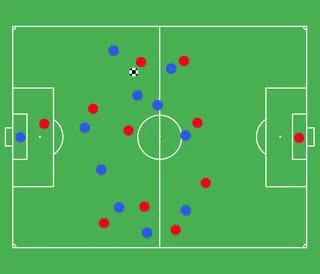 Offside Teammate
Offside Teammate
2.6 Exceptions
There are a few exceptions to the offside rule. A player cannot be offside if they receive the ball directly from:
- A corner kick
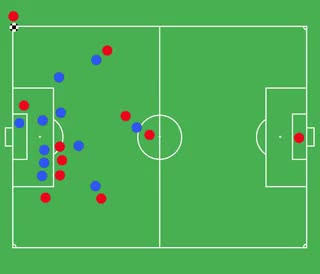 Corner Kicks
Corner Kicks
- A throw-in
- A goal kick
Additionally, a player cannot be offside in their own half of the field.
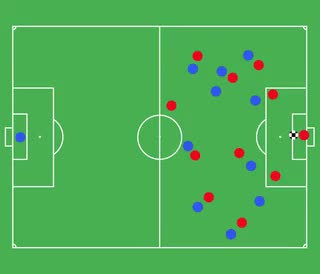 Another Exception
Another Exception
3. The Offside Trap: A Tactical Manoeuvre
The offside rule isn’t just a restriction; it’s also a tactical tool. Defending teams often use the “offside trap” to catch attacking players in an offside position.
3.1 How it Works
The offside trap involves defenders stepping forward in unison as the ball is played to an attacker. The aim is to ensure the attacker is in an offside position the moment the ball is played, nullifying the attack.
3.2 Risks and Rewards
The offside trap is risky. If mistimed, it can leave attackers with a clear run on goal. However, when executed correctly, it’s an effective way to disrupt the opposition’s attack and regain possession.
4. Technological Advancements: VAR and Offside Decisions
Video Assistant Referee (VAR) technology has significantly impacted offside decisions in recent years. VAR can review close calls and provide a more accurate assessment of whether a player was offside.
4.1 How VAR Works for Offside
When a potential offside situation occurs, the VAR team reviews the footage to determine the exact moment the ball was played and the position of the attacker relative to the defender.
4.2 Precision and Controversy
VAR has increased the accuracy of offside calls. However, it has also led to controversy, with some decisions being criticized for being too precise or for disrupting the flow of the game.
4.3 Semi-Automated Offside Technology
To further improve accuracy and speed up decision-making, FIFA has introduced semi-automated offside technology. This system uses cameras and sensors to track players and the ball, providing instant alerts to the VAR team when an offside offense occurs.
5. Common Misconceptions
- “Any player ahead of the ball is offside.” This is incorrect. A player must be nearer to the opponent’s goal line than both the ball and the second-to-last opponent to be in an offside position.
- “If a player is offside, play always stops.” A player must be involved in active play to be penalized for offside.
- “The offside rule is always clear-cut.” Offside decisions can be subjective, particularly when determining whether a player is interfering with play or gaining an advantage.
6. Why The Offside Rule Matters
- Fairness: The offside rule prevents goal hanging and ensures a more balanced and dynamic game.
- Tactical Depth: The offside rule adds a layer of tactical complexity to football, with teams developing strategies to exploit or avoid offside situations.
- Excitement: The offside rule contributes to the drama and excitement of football, with close calls and controversial decisions often sparking debate and discussion.
7. Learning More and Staying Updated
To deepen your understanding of the offside rule and other aspects of football, consider the following resources:
- The Laws of the Game: Published by the International Football Association Board (IFAB), this document outlines all the official rules of football.
- FIFA Resources: FIFA offers a range of educational materials, including videos and interactive guides, to help fans understand the laws of the game.
- Expert Commentary: Follow reputable football analysts and commentators who can provide insights into offside decisions and tactical implications.
8. Frequently Asked Questions (FAQ)
8.1 What happens if a player is offside?
If a player is penalized for offside, the opposing team is awarded an indirect free kick from the position where the offside offense occurred.
8.2 Can a player be offside from a throw-in?
No, a player cannot be offside if they receive the ball directly from a throw-in.
8.3 What does “interfering with play” mean?
“Interfering with play” means playing or touching a ball passed or touched by a teammate.
8.4 What does “interfering with an opponent” mean?
“Interfering with an opponent” means preventing an opponent from playing or being able to play the ball by clearly obstructing the opponent’s line of vision or challenging an opponent for the ball.
8.5 Is there a difference between offside position and offside offense?
Yes. A player can be in an offside position without committing an offense. They are only penalized if they become involved in active play.
8.6 How does VAR assist with offside decisions?
VAR reviews footage to determine the exact moment the ball was played and the position of the attacker relative to the defender, providing a more accurate assessment of whether a player was offside.
8.7 What is the offside trap?
The offside trap is a defensive tactic where defenders step forward in unison as the ball is played to an attacker, aiming to catch the attacker in an offside position.
8.8 Can a player be offside in their own half of the field?
No, a player cannot be offside in their own half of the field.
8.9 What is passive offside?
Passive offside refers to a situation where a player is in an offside position but not involved in active play, so they are not penalized.
8.10 Why is the offside rule important?
The offside rule promotes fairness, adds tactical depth, and contributes to the excitement of football.
9. Need More Football Insights?
Navigating the complexities of football rules can be challenging. At CAUHOI2025.UK.COM, we provide clear, reliable explanations of all aspects of the game.
9.1 Your Go-To Source for Football Knowledge
From in-depth rule explanations to tactical analyses and player profiles, CAUHOI2025.UK.COM is your ultimate resource for understanding football.
9.2 Have a Question? Ask Our Experts
Still have questions about the offside rule or other football topics? Visit CAUHOI2025.UK.COM today to explore our resources and get your questions answered. Our team of experts is here to provide the insights you need to fully appreciate the beautiful game.
Address: Equitable Life Building, 120 Broadway, New York, NY 10004, USA
Phone number: +1 (800) 555-0199.
Website: CauHoi2025.UK.COM

